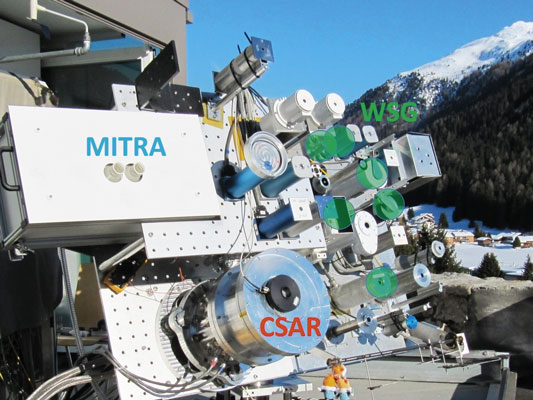The World Standard Group (WSG) is currently a group of six cavity pyrheliometers (see Figure 1) which define the World Radiometric Reference (WRR).
The WSG was first established in 1977, and was composed at that time of four of the best characterised cavity pyheliometers from around the world. Simultaneous pyrheliometer readings were then used to officially define the WRR, also in 1977.
The WRR is the primary reference for calibrating solar radiometers worldwide in the SI base units, W.m-2.
Stability of the WSG
Regular consistency tests between the WSG pyrheliometers are used to detect technical problems or contamination in individual members of the WSG. The long and short-term stability of the WSG (Figure 2) is assessed during International Pyrheliometer Comparisons (IPCs), which are held every five years at PMOD/WRC. The last IPC occurred in 2021 and the next is scheduled for 2025.
The compatibility of the WRR with SI base units (W.m-2) has been confirmed through numerous comparisons with cryogenic radiometers at several national institutes of metrology, including: the Federal Institute of Metrology (METAS, Switzerland), the National Physical Laboratory (NPL, UK), and the National Institute of Standards and Technology (NIST, USA).
Figure 2. Top: Daily averages of WRR to SI comparisons performed at PMOD/WRC with CSAR/MITRA during IPC-XIII in October 2021. The mean relative difference between CSAR and WRR irradiance values (red dotted line in top panel) is -0.31 +/- 0.4 %. Bottom: Corresponding daily averages of the spectrally integrated window transmittance as measured with MITRA. The mean window transmittance (red dotted line in bottom panel) is 0.9291 +/- 0.0002.


